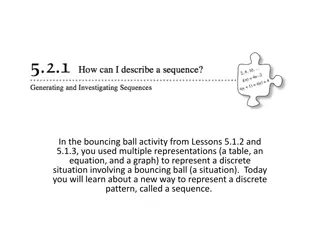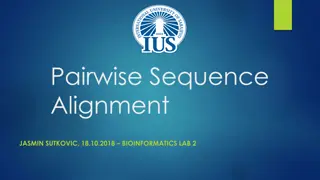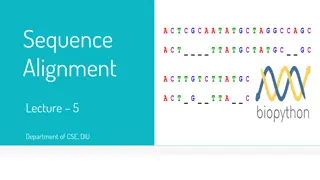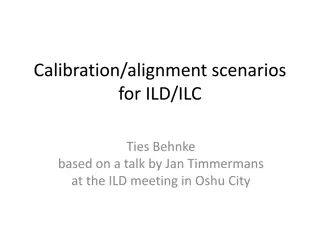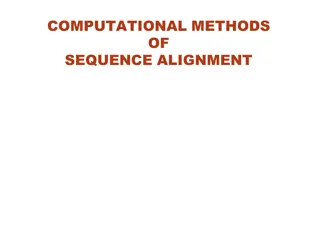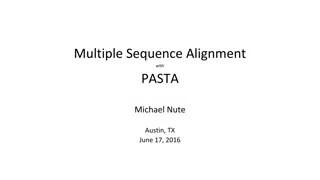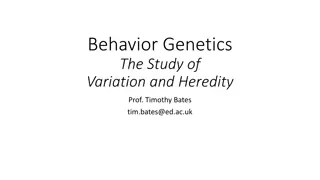Understanding Sequence Alignment in Genetics
Sequence alignment is the comparison of DNA or protein sequences to highlight similarities, often indicating a common ancestral sequence. This process is essential in determining homology and functional similarities between sequences. Types of alignment include global and local alignment, with challenges like insertions and deletions affecting difficulty levels.
Download Presentation

Please find below an Image/Link to download the presentation.
The content on the website is provided AS IS for your information and personal use only. It may not be sold, licensed, or shared on other websites without obtaining consent from the author. Download presentation by click this link. If you encounter any issues during the download, it is possible that the publisher has removed the file from their server.
E N D
Presentation Transcript
Sequence Alignment
What is Sequence Alignment? Quite simply, the comparison of two or more DNA or protein sequences to each other. The purpose of alignment is to highlight similarity between the sequences.
Why Do We Use Alignment? Fundamental assumption of sequence alignment: Sequences that are similar share a common ancestral sequence. Due to common ancestry, similar sequences have similar functionality. Sequences that share a common ancestor are said to be homologous.
Alignment can be easy or difficult GCGGCCCA TCAGGTAGTT GGTGG GCGGCCCA TCAGGTAGTT GGTGG GCGTTCCA TCAGCTGGTT GGTGG Easy GCGTCCCA TCAGCTAGTT GGTGG GCGGCGCA TTAGCTAGTT GGTGA ******** ********** ***** TTGACATG CCGGGG---A AACCG TTGACATG CCGGTG--GT AAGCC TTGACATG -CTAGG---A ACGCG Difficult due to insertions or deletions(indels) TTGACATG -CTAGGGAAC ACGCG TTGACATC -CTCTG---A ACGCG ******** ?????????? *****
Types of Alignment 1. Global Alignment 2. Local Alignment











